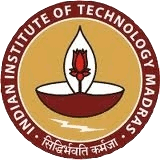Team:Tufts
From 2014.igem.org
(Difference between revisions)
| Line 11: | Line 11: | ||
</script> --> | </script> --> | ||
| + | <!-- | ||
<style type="text/css"> | <style type="text/css"> | ||
* { | * { | ||
| Line 22: | Line 23: | ||
height: 0px; | height: 0px; | ||
} | } | ||
| - | + | ||
#menubar{ | #menubar{ | ||
display: none; | display: none; | ||
} | } | ||
| - | + | ||
#menubar :hover{ | #menubar :hover{ | ||
visibility: visible; | visibility: visible; | ||
| Line 46: | Line 47: | ||
} | } | ||
</style> | </style> | ||
| - | + | --> | |
<html> | <html> | ||
Revision as of 02:20, 10 October 2014
Shiga toxin, a worldwide menace, has killed over 1 million people to date and continues to afflict almost 150 million people each year. Currently, there is no treatment for Shiga toxicosis and it leads to complications in the human system like hemolytic uremic syndrome (HUS) and renal failure. Here, we propose a two-fold, novel synthetic biology approach to combat the lethal effect of the toxin. We aim to neutralize the already produced toxin through a nine amino acid Gb3 mimic peptide. We have engineered the Gb3 mimic along with a cellular export signal (ompF) downstream of AHL(quorum sensing molecule) inducible promoter (pLuxR). We also plan to prevent further toxin production by inhibiting the biofilm formation of shigatoxigenic E.coli using indole-3-acetaldehyde (I3A). We expect to validate our approach through functional assays and in silico modelling. Our findings can potentially initiate a new perspective of tackling Shiga toxicosis using synthetic biology tools.

 "
"







